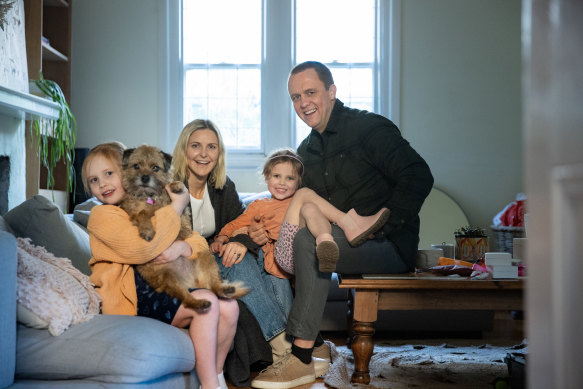‘It’s very unique’: The surprising Melbourne suburb where house prices rose most
By Jim Malo
House prices are higher than a year ago in a string of affluent Melbourne suburbs and affordable outer suburban areas as the property market recovers.
Homeowners in about a fifth of analysed suburbs have enjoyed some house price growth over the past 12 months, and the uptick in exclusive neighbourhoods could indicate the market was beginning to turn.
Domain head of research and economics Dr Nicola Powell said high-priced and affluent areas typically lead the property cycle.
“The inner east has now got an annual increase,” she said. “You can see that the growth has now spread to other areas.”
The suburb with the most growth was Lower Plenty, which had a median of $1.41 million – above Melbourne’s median of $1,028,000 – and shot up 17.5 per cent in a year.
Morrison Kleeman director Rocco Montanaro said the suburb was something of a well-kept secret, a small area with large blocks of land and relatively easy access to the city.
“It’s hard to find that sort of acreage,” he said. “People are looking for the space, privacy and that country feel. It’s very unique.
“It’s one of the very few places that’s within 20-odd kilometres from the Melbourne CBD where you can still buy big, beautiful blocks of land,” he added. “It’s also one of the pockets where you get quite large homes that are fairly new.”
Cashed-up families who want enough space for a tennis court, pool and/or larger animals like horses were moving to the area, Montanaro said, prompting record sales.
“It’s hard to find that sort of country lifestyle that’s within 20 kilometres of Melbourne’s CBD and that’s what Lower Plenty has to offer,” he said. “If you go 20 kilometres in any other direction [from the CBD] you won’t find that same feeling.”
The next most growth was in the western suburb of Maddingley, up 10.7 per cent to a median of $647,500, followed by the affluent suburbs of Armadale (up 10.5 per cent to $2,721,000) and Kew (up 9.9 per cent to $2.78 million).
“It’s probably a price trough but we can’t confirm it, but the premium areas were leading price growth,” Powell said. “The house price cycle has moved into recovery.”
For units, Caulfield South rose most in the past 12 months, up 23.2 per cent to a median of $785,000. It was followed by Clayton South (up 10.2 per cent to $598,800) and Balwyn (up 8.4 per cent to $895,000).
Most suburbs were still recording price falls over the last 12 months, she said, mostly due to a lag in the available data.
“We’ve only just started to see, on a citywide level, a recovery, so we’re still capturing quite a bit of a downturn,” Powell said. “As time ticks on and Melbourne overall moves on to a recovery, you should start to see the depth of falls will start to ease.”
Northcote was one such suburb which recorded a price fall. Its median price shrank 5.9 per cent to $1.6 million, but was up 18.5 per cent on five years ago.
The listings-starved market was prompting some odd behaviour from buyers, recent Northcote seller Sara Nicholls said. She had three interested parties at the auction of her home, which passed in before two parties then expressed interest above the reserve price in negotiations. The home sold later that Saturday.
“In an ideal world, it maybe wasn’t the best time to sell that place – but we were selling in the same market [that we had just bought in],” she said. “Obviously with the way the market is at the moment we were conscious about what the price was and what we could expect.”
Nicholls said the price point of the home she sold – approaching $1.5 million – drew financially anxious buyers.

Sara and Adam Nicholls say selling in the current market was nerve-wracking. Credit: Simon Schluter
“They’re people who don’t want to overspend and overcommit if they’re downsizers or people who have never bought property before,” she said.
The agent on the sale, Jellis Craig partner Nigel Harry, said this was common mindset among buyers.
“Buyers are a little bit reluctant to overpay given they’re having their finances reassessed … they’re trying to find value but the market is still forcing them to pay a fairly compelling price and they need to be pushed,” he said. “The demand is outstripping the supply. While ultimately, everyone’s of the opinion they can find value at the moment, they will still have to stretch.”
St George chief economist Besa Deda said price growth continued to be driven by the lopsided supply and demand situation, a result of hiking interest rates while population growth was booming.
“There’s a housing challenge that we’re facing,” she said. “We have strong population growth, but then there’s a shortage of dwellings across key parts of NSW and Victoria, to a lesser extent, and building approvals are well off their peaks and builders are still on the sidelines.”